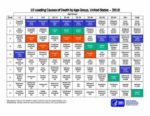The lower body, also known as the lower extremity, extends from the hip to the toes and includes over 30 bones and 40 muscles. It is divided into several regions: the hip, thigh, knee, leg, ankle, and foot.
Hip and Pelvis
The structural framework of the hip region is provided by the pelvis, which includes the hip bones, sacrum, and coccyx. The hip joint is a ball and socket joint, and the muscles in this region are divided into anterior and posterior groups. The hip and pelvis are supplied by the gluteal and femoral arteries, and drained by the external and internal iliac veins. The nerves in this region include the cluneal, femoral cutaneous, femoral, obturator, sciatic, and gluteal nerves.
Thigh
The thigh contains the femur, the longest bone in the human body. The muscles of the thigh are divided into anterior, medial, and posterior groups. The femoral artery and its branches supply blood to the thigh, while the femoral vein, circumflex vein, long saphenous vein, and deep vein of the thigh drain it. The nerves in this region include the femoral and sciatic nerves.
Knee
The knee is a hinged joint capable of flexion, extension, and rotation. It is formed by the tibia, fibula, and patella. The muscles around the knee are divided into knee extensors and knee flexors. The genicular arteries supply blood to the knee, while the popliteal vein drains it. The nerves in this region include the genicular nerves.
Leg
The leg, the region between the knee joint and the ankle joint, contains the tibia and fibula. The muscles of the leg are divided into anterior, lateral, and posterior groups. The anterior and posterior tibial arteries supply blood to the leg, while the small saphenous, great saphenous, tibial, and fibular veins drain it. The nerves in this region include the common fibular, tibial, and saphenous nerves.
Ankle and Foot
The ankle is a hinged joint capable of plantarflexion and dorsiflexion. The foot contains the calcaneus, talus, navicular, cuboid, and cuneiform bones, as well as the metatarsals and phalanges. The muscles of the foot are divided into dorsal, central plantar, medial plantar, and lateral plantar groups. The branches of the dorsal artery of the foot and the deep plantar arch supply blood to the foot, while the superficial dorsal and plantar venous networks drain it. The nerves in this region include the medial, plantar, and digital nerves.
In conclusion, the lower body is a complex structure that plays a crucial role in movement and balance. It is composed of various bones, muscles, nerves, and blood vessels, all of which work together to enable activities such as walking, running, jumping, and standing.



